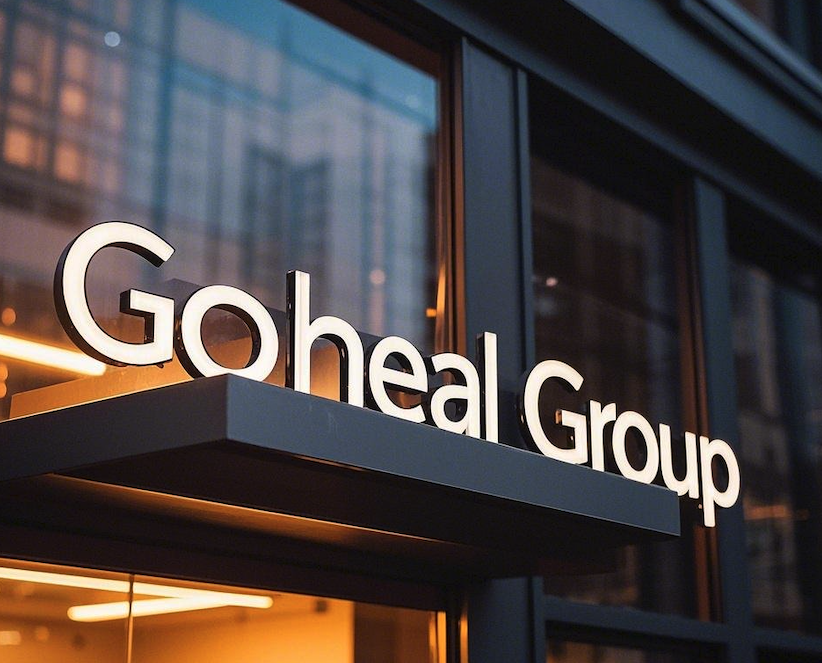"The image of a soldier is like water. The shape of water avoids heights and tends to go down. The shape of a soldier avoids the real and attacks the empty." The capital market is like a battlefield. The listing of a company is not the end, but the starting point of a higher-dimensional game. Some people think that the ultimate goal of listing is to raise money, some think it is to keep the stock price rising, and some believe it is to build a century-old brand, but what if these are all wrong?

American Goheal M&A Group
In the chess game of capital, the real masters are never confused by appearances, but accurately grasp the balance between the market, investors, supervision and their own development, making the company the most scarce asset in the capital market. Goheal has summarized a key cognition in many years of mergers and acquisitions and capital operation practice: the ultimate goal of capital operation after listing is to allow the company to enter the "capital positive cycle", make funds cheap, and make market value a booster for corporate growth, rather than a constraint.
So, what kind of strategy is needed to achieve this seemingly simple goal?
The illusion of listing: Is the ultimate goal of capital operation really "maximizing market value"?
After many companies go public, the first reaction is to increase market value. With a high market value, it is easier for the company to raise funds, the wealth of the management team will increase, the market attention will increase, and even the morale of the employees will be higher. This seems to be the ultimate goal of the company after going public.
But the fact is that maximizing market value does not mean optimal capital operation. WeWork, the once-prosperous Internet giant, was valued at $47 billion when it went public, but today its valuation has dropped sharply to about $2.9 billion; on the other hand, Tesla, despite a sharp drop in its stock price, still gained market recognition through precise capital operation and eventually became a trillion-dollar company. These two completely different paths prove one point: market value is only a result, not a goal.
What the capital market really wants is a balance between "certainty" and "growth". If a company only tells stories and lacks the support of long-term growth, then no matter how high its market value is, it is just a bubble; if it only makes money and lacks the flexibility of the capital market, then the growth rate is likely to be limited. Therefore, a true master of capital operation does not simply pursue market value, but allows the company's market value to enter a "positive capital cycle."
Positive capital cycle: Only when funds become "cheap" can enterprises truly take off
The capital market has an invisible rule for enterprises: when you need funds, money is the most expensive; when you don't need funds, capital is willing to pay you.
Goheal found in many cases that those enterprises that can really take off have one thing in common - they have all entered the "positive cycle" mode of the capital market:
1. The market believes in your story and is willing to pay for your future - so that enterprises can raise enough money at high valuations, and will not cause stock prices to plummet due to financing.
2. The funds raised can bring greater growth - the capital market is willing to provide "cheap funds", which means that financing is not a burden, but a booster for growth.
3. The business growth of enterprises can further push up the market value - the higher the market value, the lower the financing cost, and then the enterprise can better carry out mergers and acquisitions, expansion, and form stronger market barriers.
A company that enters the positive capital cycle can often continue to gain market favor, and even if there are short-term fluctuations, it can quickly return to the growth track. A typical example is Tesla. In 2019, the market still questioned its business model, and the stock price was only around $30. However, in 2021, as the growth logic of the new energy market was verified, Tesla's financing ability was improved, and the stock price soared to more than $1,200, while the company's financing costs were also greatly reduced, and finally achieved a trillion-dollar enterprise market value management.
Three steps to market value management: let the market believe in your growth logic
How to make a company enter a positive capital cycle? Most companies will go through such a cycle after listing: the market is hot in the early stage, the market value falls in the middle stage, and then enters a stable growth or long-term downturn in the later stage. Goheal found that real market value management masters will ensure that the company's market value operation is always in a healthy state through the following three steps.
Step 1: Create market awareness and build a "story + data" system
The capital market is an emotion-driven market. Beautiful data alone is not enough. Companies need a complete growth logic. For example, Apple did not just sell mobile phones, but sold a "technology ecosystem"; Tesla did not sell electric cars, but "the future energy revolution"; Alibaba did not sell e-commerce, but "digital infrastructure." Successful companies will convince the market that their growth is inevitable, not accidental.
Step 2: Accurate capital operation to maximize shareholder interests
The capital operation of an enterprise cannot be limited to "financing" and "stock price increase", but should use the tools of the capital market to carry out equity incentives, mergers and acquisitions, repurchases and other strategies to make market value management a long-term sustainable process. For example:
1. Equity incentives: bind the core team to market value growth to ensure the long-term stability of the enterprise.
2. Mergers and acquisitions: enhance the market's expectations for the future of the enterprise by acquiring high-growth assets.
3. Repurchase and increase holdings: repurchase in a sluggish market to enhance investor confidence and reduce market floating chips.
Step 3: Maintain market confidence and ensure long-term capital inflows
The capital market is most afraid of uncertainty, especially management turmoil, questioned profit models, and declining competitiveness. Therefore, when operating market value, enterprises need to maintain market confidence and keep the market's expectations of the enterprise through continuous information disclosure and investor communication.
Conclusion: What is the ultimate goal of capital operation after listing?
If you think that the ultimate goal of a company after listing is "maximizing market value", then you may have overlooked the true logic of the capital market. Going public is just a starting point. Real experts will use capital operations to allow companies to enter a positive capital cycle, make funds cheaper, and make market value a booster for corporate growth rather than a burden.
So, in your opinion, what is the best capital operation strategy for companies after going public? Is it high-growth mergers and acquisitions, precise market value management, or long-term stable operations? Welcome to leave a message in the comment area to discuss, let us explore more possibilities in the capital market together!

Goheal Group
[About Goheal] Goheal is a leading investment holding company focusing on global mergers and acquisitions holdings. It is deeply engaged in the three core business areas of listed company control acquisition, listed company mergers and acquisitions and restructuring, and listed company capital operations. With its deep professional strength and rich experience, it provides companies with full life cycle services from mergers and acquisitions to restructuring and capital operations, aiming to maximize corporate value and achieve long-term benefit growth.